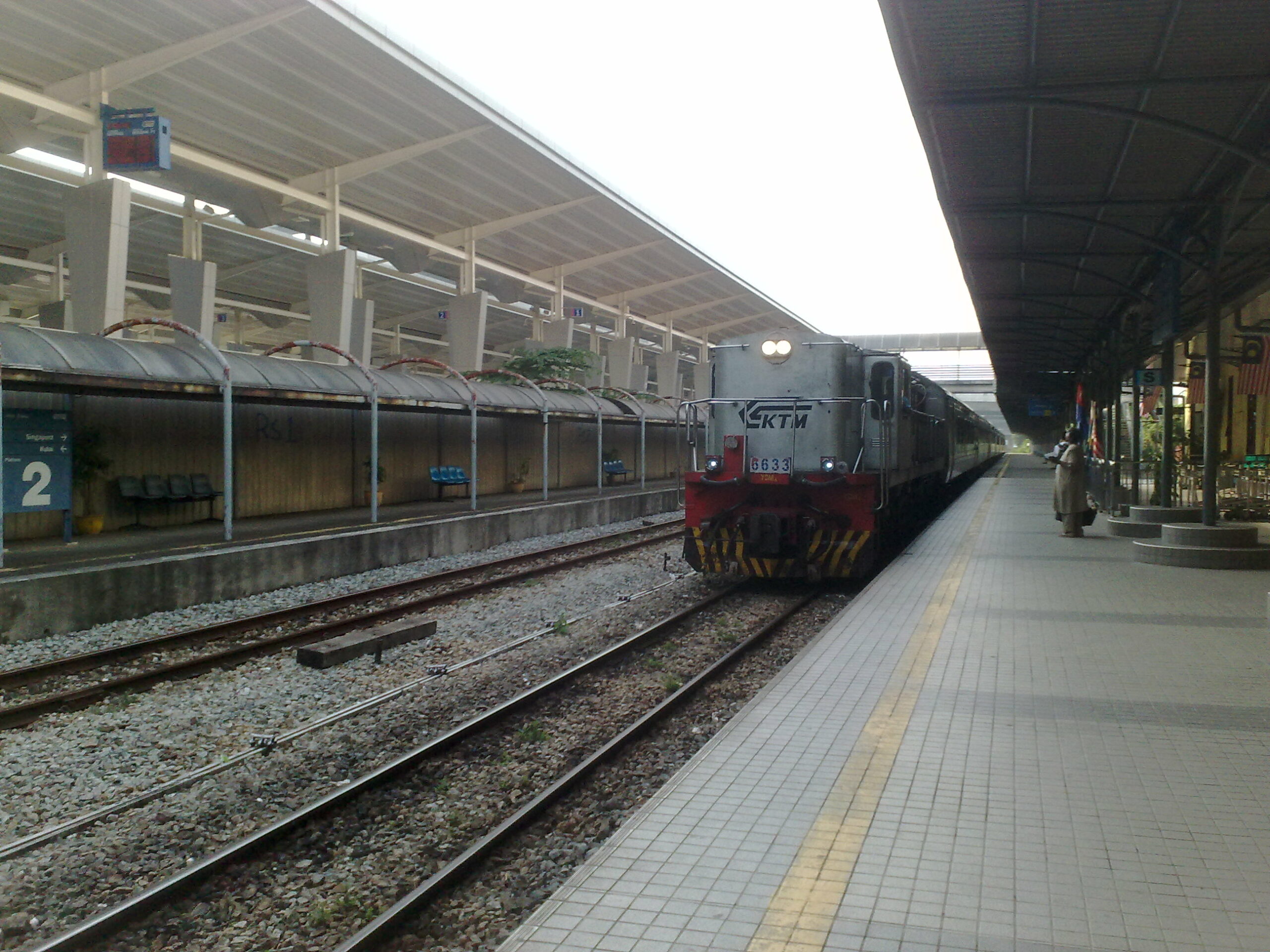On the last day of my stay in Malaysia, I wanted to try to visit a small town in Malaysia accessible by train. I thought that Gemas, Negeri Sembilan was the most appropriate town to visit for a one-day trip.
I checked out of the hotel one hour before the train departure time (9:02 am) and asked the taxi cab parked in front of the hotel to send me to KTM JB station.
The waiting room of JB station was a bit dirty, and only a few people were waiting for the train. While sitting on a bench to wait for the train, a priest-looking man with an ocher robe walked up to me and talked in Chinese or Malaysian language to me, trying to force a charm and prayer beads upon me. I told him that I couldn’t understand what he said because I didn’t speak Malaysian. He then switched the language into English and said, “Doe-neh-sen, doe-neh-sen.” I understood that he was saying “donation,” so I refused it. He moved out of the waiting room and went somewhere else.
Half an hour later, quite a few passengers gathered in the waiting room. Then the priest came back and asked for a donation to each of them and was refused one after another. I guessed he should be a fake priest. It was the only morning, and my feelings were hurt by him.
About fifteen minutes before the departure time, the boarding gate was open. We had my ticket punched and was allowed to get out to the platform. The rail had a 1000mm gauge, a little narrower than that of the Japan Railway. As far as I could see, it had almost the same width as JR’s rails, though. All the operation section is single-track, and non-electrified except certain sections in Kuala Lumpur.

No sooner had I get out to the platform than a train came in.

It was Express Rakyat, which had departed Singapore early in the morning and was to Butterworth late at night via Kuala Lumpur and Ipoh. A diesel locomotive was pulling coaches.

Inside view of a coach. The seats were hard like a bench, and the windows were dirty, just like a Japanese old train. Oops! It’s not a coach; it’s a dining car.

A coach was like this. It was much cleaner with soft seats and an LCD TV equipped on a wall, which displayed a movie while driving non-stop sections.
The train departed JB at 9:02 am, just on time. It stopped at Kempas Baru and Kulai, and ran for about an hour and stopped at Kluang. After departing Kluang, it drove for almost two hours before stopping at Segamat. Every station was simple.





They are the views from the train, which sped across jungles where palm trees, cycad trees, and other trees of tropical rain forest were growing in colonies.
Several minutes past twelve noon, the train arrived at Gemas.




Gemas was an important intersection of two major lines of KTM, so it was a large-scale station. The station building was as simple as any other station, though.
At the moment when I got off to the platform, a stinky smell attacked me. It stank just like a dustcart collecting garbages. All the town was covered with such a smell. I don’t want to say that, but such kinds of smells were in the air in JB, Gemas, and every city in Malaysia.





